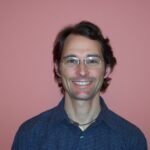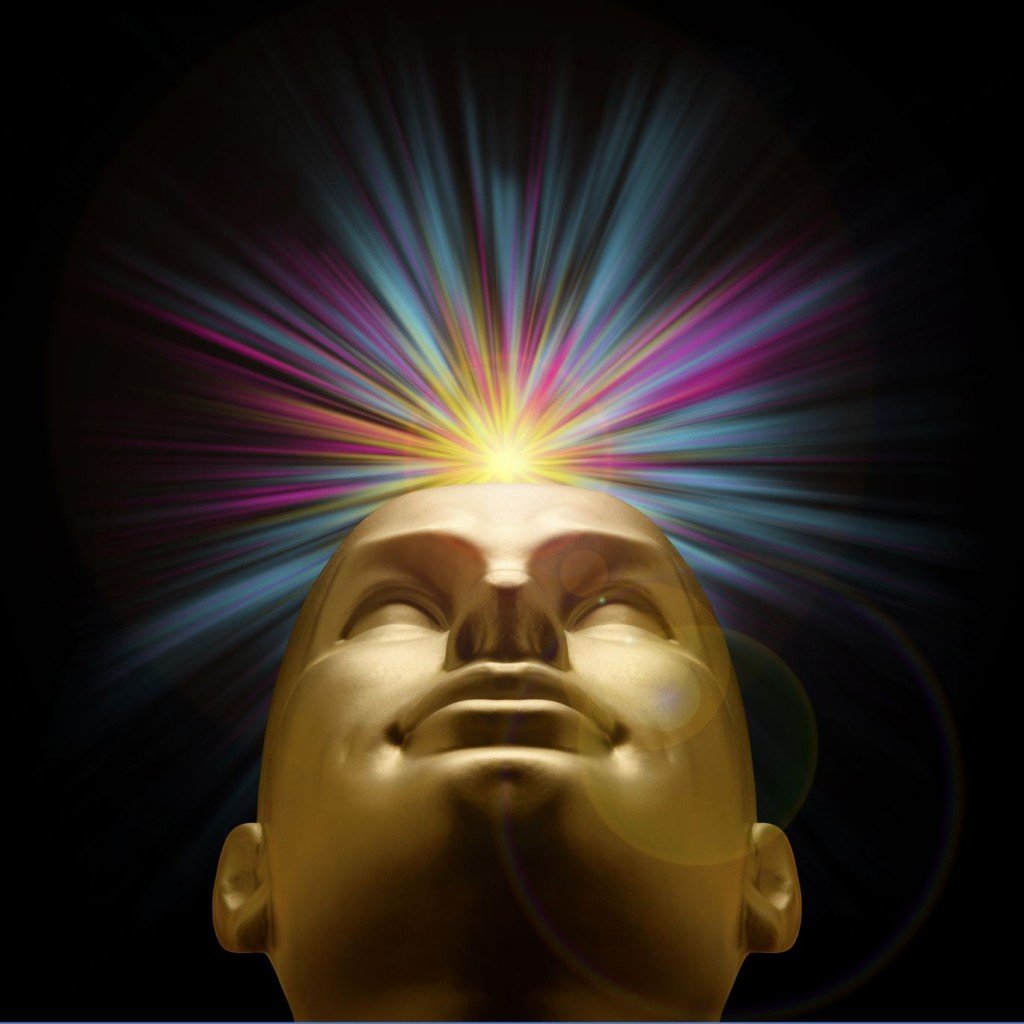Michael Byrne, MA, ND
Love is the pursuit of the whole.
-Plato
Mind/Body medicine recognizes the powerful influence the mind has on the body. It highlights the pitfalls of dualistic thinking, and points toward a more holistic view of life and medicine. In this field, we have come to recognize that nothing is meaningful when viewed as a fragment, when taken out of context. Everything lives within context and also creates it. You’ve heard it before, when parts come together a synthesis is revealed that could not have been predicted by the individual parts. Thus we have holistic medicine, and one of the guiding principles of naturopathic medicine – treat the whole person.
I’d like to look at mind-body medicine in its most expanded view – the interconnectedness of all aspects of life, not just mind and body. Perhaps we should call this mind-body-heart-spirit-family-culture-environment medicine. I’ll just use mind-body, or holistic, for short. I will share clinical examples of these relevant connections within patients’ lives. I will also share some assessment and treatment perspectives I find helpful that come from research in the field of psychotherapy.
Clinical Examples
One patient I worked with was struggling with obesity, hypercholesterolemia, hypertension and dysthymia. We were addressing all of these things with a fairly typical naturopathic approach through diet, exercise and supplements. At one point I learned that she had a lot of clutter in her home. We got into a discussion about how our environment affects our health and state of mind. She must have been inspired because 2 weeks later she came in excitedly, telling me even before sitting down about the 12 bags of stuff she had given away. Her mood was bright, her spirit was light, and she had a sense of hope and optimism that I had not yet seen. This was a turning point as her cholesterol, blood pressure and weight all began coming down, with her mood clearly going up.
Another example involves a young man who was challenged with low back pain and other migrating musculoskeletal pains, poor digestion exhibited by increased phlegm production with many foods, and periodic bouts with major depression and suicidal ideation. He was seeing a number of practitioners who were addressing each of these areas separately. The turning point in his health began when he started whole-heartedly pursuing his love of making music. Over a short period his pains cleared up, his digestion became strong, and his depression lifted. Today, many years later, he is in better shape than he has ever been, has few challenges with digestion, and does not struggle so desperately with depression.
I was greatly inspired by one patient who struggled with chronic neck pain for 5 years following an accident. She had surgery to address herniations of the disks at C5/6 and C6/7, which had resulted in a worsening of her symptoms – headaches, cervicalgia, and parasthesias down both arms. She also began to develop lumbar and thoracic pain as a result of the long-standing nature of her injury. Insomnia and anxiety complicated the picture, not surprisingly. During the 5 years prior to seeing me, she had become highly dependent upon a number of psychoactive and pain medications, including lorazepam and gabapentin. Our work began with craniosacral therapy. Over time, our sessions became focused on counseling around anxiety and relationship issues. Over the 15 months we worked together, this patient was able to wean herself off all her medications, with both her chronic pain and insomnia resolving. Today she has a renewed sense of safety and self-efficacy in the world, and she is experiencing new growth in her relationships.
More than anything, these examples remind me that patients have tremendous resources of their own, both external and internal. We as practitioners need to help patients realize and access these strengths and resources. The healing that we have to offer is usually far less powerful and lasting than the healing that patients possess themselves.
Treating the Whole Person
Naturopathic medicine is truly holistic medicine, and it is what I think mind-body medicine ultimately points toward – attending to the whole, rather than the parts. In your assessment, I am sure that you evaluate a patient’s diet, level of activity, and social support. I encourage you to go further. Take the time to learn what life is like for your patients on different levels. As Alfred Adler, an eminent early 20th century psychologist exhorts, we must attempt “To see with the eyes of another, to hear with the ears of another, to feel with the heart of another.”1(p135)
Do your patients have people in their lives they have not forgiven (including themselves)? Are they satisfied with their levels of mental stimulation, creative outlets, affection and play? Do they feel their life has meaning, has a purpose? Do they have an honor code that they follow and feel good about, or a belief in something larger than themselves? I touch upon all these areas in a simple 1-page form where they check off their satisfaction level in each area. This questionnaire invariably opens the conversation into areas I might otherwise have missed.
It is also useful to remember that the area of complaint is not always the best place to address therapy. One person might come in with the complaint of depression, but be best served by first looking at diet and exercise, not talk therapy. Another person might present with digestive issues, and yet counseling around anxiety issues might be the medicine needed, not dietary restrictions. If we are practicing a truly holistic and individualized medicine, we will be confident in following whatever direction our patient’s story leads us.
Lessons from Psychotherapy
The last 40-50 years of research in the psychotherapy profession have been analyzed by a number of researchers to determine what factors in therapy account for positive changes in the client. The research has revealed quite conclusively that there are 4 “common factors” that contribute to therapeutic change.2 These factors apply regardless of the theoretical orientations and methods therapists use.
The 4 factors are as follows:
- 40% of change can be attributed to the client’s internal and external resources, including what occurs in the lives of clients during therapy, but outside of the therapy room.
- 30% of change comes from the strength of the relationship between client and therapist, the degree of collaboration, the alliance.
- 15% of change comes through the presence of hope and the expectation that change will occur.
- 15% of change comes from the appropriate and skilled use of a model/technique that fits the client’s needs.
These studies demonstrate that different theoretic orientations (psychodynamic, cognitive behavioral therapy, Jungian, etc.) are equally effective, and that other factors better explain successful outcomes in therapy. This was not exactly what many therapists wanted to hear (don’t we all want to believe that our own approach is the best one?) When analyzed more carefully, however, it was seen that the effectiveness of a theoretical model increased when it matched the client’s own view of how change occurs. This suggests that those practitioners with greater flexibility in how they work with clients will have greater success.
And yet, the skillfully chosen theoretical orientation or modality still only accounts for 15% of therapeutic outcome in psychotherapy. The remaining 85% is a function of the two people present in the therapy, client and therapist. Indeed, a client’s ratings of their alliance with their therapist are the number one predictors of success, more predictive than diagnosis, approach, therapist, or anything else.
It follows that health practitioners of every tradition would do best to: (1) actively uncover and promote their client’s/patient’s own strengths and resources, (2) form and nurture a collaborative alliance with each client/patient, and (3) work to always build hope and an expectancy that the client/patient will make progress toward their goals.
The Healing Power of Presence
There are many modalities of treatment and assessment within naturopathic medicine and also world healing traditions. Studies have proven their efficacy, too. It is my opinion that there is a common thread that speaks to the effectiveness of these therapies. This is the presence of the practitioner – the ability to be present.
Each modality or healing system requires one to be very present in order to perform it well. An acupuncturist must assess subtle energy fluctuations, a homeopath and a counselor must attend to the many details and emotional nuances of a patient’s story and demeanor, and a massage therapist assesses muscular and fascial patterns through the subtle sensitivity of his or her hands. In each of these cases, the practitioner must be present or else the tool they are using is ineffective. As William O’Brien so aptly put it, “The success of an intervention, depends on the interior condition of the intervenor.”
All of these disciplines require attentiveness; they require presence. Thus the quality of healing a client experiences is greatly affected by the practitioner’s own presence. The 4 “common factors” described above also require the therapist to be present. Not only does the practitioner’s ability to be present deliver a more attuned treatment, it encourages the client to be in the present moment as well.
Presence can be seen as a healing salve that:
- Acknowledges a patient’s struggles (compassion) – the patient is seen and accepted
- Encourages awareness (insight) – the patient sees self more clearly, strengths and weaknesses
- Empowers action (courage) – the patient sees a way forward
Robert Powers, a mentor of mine, put it something like this, “In all that we do, we are in essence trying to communicate only 3 things in therapy (1) ‘I hear how hard this has been for you’, (2) ‘I believe you have what it takes to make the changes you want’, and (3) ‘How about giving it another try?’” After all, it is the patient who does the work of healing. The examples I shared earlier demonstrate the patients as the heroes of their healing. Adler said, “Altogether, in every step of the treatment, we must not deviate from the path of encouragement.”1(p342) As practitioners of holistic medicine, we can be immensely encouraging to our patients through our care and effort to understand them as whole, multifaceted, creative and capable people.
 Michael Byrne, ND, MA has a practice in Seattle where he focuses on psychotherapy with children, adults and couples. He also specializes in attending to the mental, emotional and spiritual components of pain and other chronic illnesses. He is a graduate of Bastyr University and Antioch University Seattle, and teaches counseling and mind-body courses at Bastyr.
Michael Byrne, ND, MA has a practice in Seattle where he focuses on psychotherapy with children, adults and couples. He also specializes in attending to the mental, emotional and spiritual components of pain and other chronic illnesses. He is a graduate of Bastyr University and Antioch University Seattle, and teaches counseling and mind-body courses at Bastyr.
- Ansbacher HL, Ansbacher RR, eds. The Individual Psychology of Alfred Adler. New York, NY: Harper & Row; 1956:135.
- Asay TP, Lambert MJ. The empirical case for the common factors in therapy: Quantitative findings. In: Hubble MA, Duncan BL, Miller SD, eds. The Heart & Soul of Change: What Works in Therapy. Washington, DC: APA Press; 1999:23-55.





